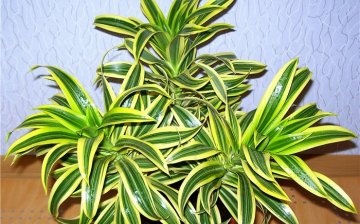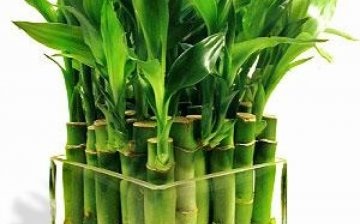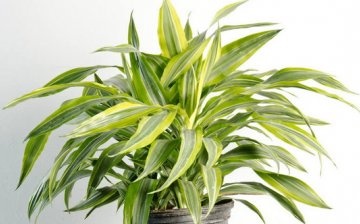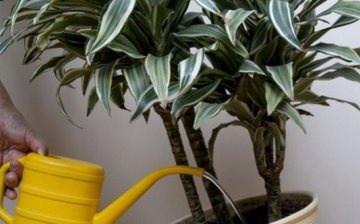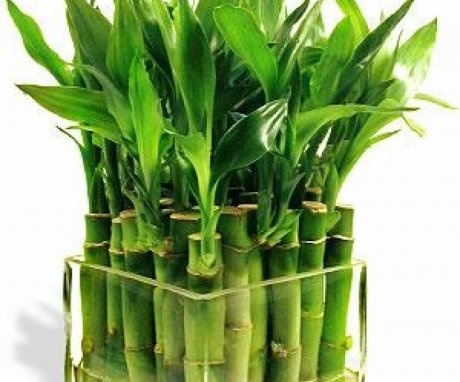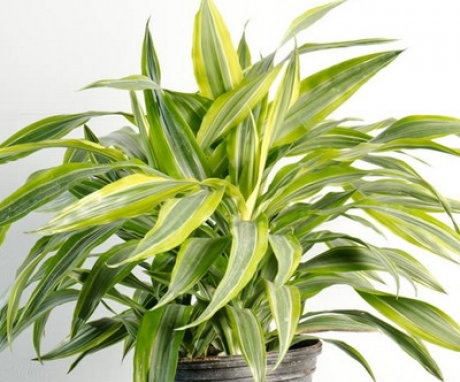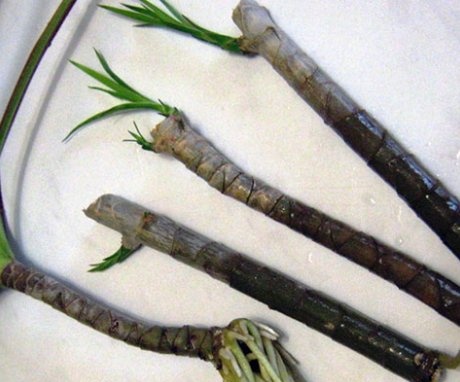A variety of dracaena species, features of care and reproduction
If you have a desire to grow a palm tree at home, then it is better to pay attention to the dracaena. You can always choose a suitable option from a wide variety of types.
Content:
- The most common types of dracaena
- Lesser known varieties of dracaena
- Dracaena care
- Dracaena transplant and reproduction
The most common types of dracaena
It will take a very long time to list all types of dracaena, since dracaena can grow as a houseplant, or maybe as a street plant. In nature, there are uncultivated species that are equal in size to trees. At home no more than 10 types of dracaena are used.
The most popular types:
- Dracaena Marginata can most often be found in apartments, it is used to decorate houses, offices, shops and any other premises. This type of dracaena outwardly resembles a palm tree, the trunk is long, the leaves are located only on the crown, they are collected in a bunch. The leaves themselves are dark, thin, long. The maximum height of the bordered dracaena is 2 meters, but at home it rarely grows to such a size.
- Dracaena Sander is no less common. Several shoots are planted in one pot at once, outwardly they can be confused with bamboo. The upper part of the shoot, like a bamboo, is twisted into a spiral. This type of dracaena in a glass vase looks much more decorative.
- Fragrant dracaena got this name due to the fact that its flowers emit a pleasant aroma. The dracaena peduncle itself grows up to 1 meter in length, it is extremely rare to see dracaena bloom at home. The trunk of this species is dense, thick, but in need of support. The leaves are wide, at the widest point they reach 10 cm, they can have a variegated pattern or be monochromatic.
- Dracaena deremskaya can reach a height of 3 meters. This species can be distinguished by its non-branching thick trunk. The trunk is lignified, the leaves are thick. When the plant stretches in length, it sheds the lower leaves, marks remain in this place. The leaves are long and thin, the maximum length is 50 cm. While the plant is young, the leaves are more elastic and have a stable shape, as the dracaena matures, the leaves droop. Flowering of this species can also rarely be achieved, but if this happens, then beautiful white flowers with a red edging will emit a specific smell.
Lesser known varieties of dracaena
If a store offers to buy a dracaena mix, this means that it is not known exactly which genus the tree belongs to. Only an experienced gardener, by external signs, will be able to determine which species and variety the dracaena belongs to.
It is worth paying attention to the following types:
- Dracaena Godsef is a shrub plant, naturally found in Congo. The maximum height of the shrub is 50-60 cm, the stems are thin, branching widely, scaly. Leaves are oval in shape, their average length is 10 cm, collected in groups of 3-5 pieces. The surface of the leaves is glossy, the color is spotted. At home, flowering is possible, but when favorable growing conditions are created, a pleasant delicate aroma emanates during flowering.
- Dracaena Golden has a thin, short barrel. The leaves, on the contrary, are dense and wide, the maximum length of which is 20 cm, the color of the leaves is striped.It is difficult to grow this type of dracaena, since it is very whimsical, makes high demands on temperature and humidity.
- Dracaena, bent in nature, grows up to 5 meters, at home no more than 1 meter. The trunk is thin, needs a support, can be single or branched. The leaves have an olive tint, the maximum length is 15 cm, taper towards the end. Representatives of this species develop slowly, are whimsical, flowering at home is rare.
- Dracaena surculosis is rarely grown at home, it is very difficult to find it. The species has the shape of a bush, its maximum height is 3 meters, lignified shoots grow from the soil. The leaves are collected in groups of 3-5 pieces, the average leaf length is 12-15 cm, the color is spotted. It can bloom indoors, loves fresh humid air.
- Dracaena Hooker came to us from Africa, the average height is 1.5 meters, the trunk can be single or bifurcated. In total, the plant has up to 30 leaves, they are dense, wavy, taper towards the end, each about 70 cm long.
- Dracaena dracaena has a short trunk, which ends with a rosette of linear leaves, the length of which reaches 90 cm.
- Dracaena capitate has oval leaves pointed at the ends, petioles are short. The color is spotted, the leaves are darker on top, and light on the bottom.
Each type of dracaena has significant differences from others, although there are general similarities. Dracaena looks self-sufficient, it can decorate any spacious room.
Dracaena care
Although some types of dracaena need special growing conditions, there are still general rules that must be followed when caring for a plant.
Dracaena loves bright light, but it should be protected from direct sunlight, which can lead to plant diseases. If you put the pot on a windowsill, then a curtain should protect the leaves from light. However, the plant will not thrive in shade or partial shade conditions. If the color of the leaves has become lighter, this means that it does not have enough sun, in which case artificial additional lighting may be needed.
The temperature in the room should be from 15 to 28 degrees, it is better to take the average value - 20 degrees.
If in the cold season the air temperature drops below 15 degrees, then you need to limit watering, because if the substrate freezes, the dracaena roots may die.
Dracaena needs moderate watering, during the growing season it can be watering 2 times a week, in the autumn-winter period 1 time per week. You can reduce or increase the amount of watering if the leaves begin to turn yellow and fall off. Over-watering the root system can rot. In this case, you need to cut off the dead roots and remove the rotten part of the trunk, sprinkle the sections with activated carbon, transplant into new soil. The air must be humid, it is advisable to spray the plant from a spray bottle twice a day. If the air is dry, the tips of the leaves will dry out. Every few months, a shower is organized for the plant.
Plant feeding:
- Dracaena will respond well to feeding, although it does not have special requirements for fertilizers.
- In spring, complex fertilizer is applied 2 times a month, in winter 1 time per month.
- After regular fertilization leaves become smoother, brighter, livelier.
- Immediately after planting, fertilizer is not applied, since it is possible to burn the young root system.
Dracaena transplant and reproduction
The first dracaena transplant is carried out no earlier than 2 years later. An adult plant is transplanted every 4 years using the transhipment method. The land is purchased specialized for dracaena or palm trees. Sand or charcoal can be added to the soil, this will protect the tree from many diseases.
To make the soil looser, for the penetration of oxygen to the bark system, brick chips are added to the soil.Be sure to fit a large drainage into the pot.
To form a tree, the top of the dracaena is cut off, no more than 5 leaves are left (depending on the type). If you put a plastic bag on the cut, that is, it is possible to get candles, after about a month, new lateral buds will appear at the cut site. Any such procedures are carried out only during the period of active growth, that is, in the spring or early summer.
For reproduction, the cut top of the tree is most often used.
The acceptable length of the tip for reproduction is up to 15 cm. The cut part is placed in water with the addition of activated carbon. The root container should not be transparent. Sand can be used instead of water.
You can also divide the stem into several parts, each about 6 cm long. A vessel with substrate and sand is prepared, each layer is 6 cm long. This is necessary so that rooting occurs in the sand, and the roots are not injured during transplantation. The future dracaena is deepened to a depth of 2 cm. In winter, the plant goes into a dormant period, which lasts from October to January. At this time, it is especially important to prevent waterlogging of the soil.
Dracaena can get sick... The most common problems are:
- Spider mite
- Schervets
- Shield
Caring for dracaena is not difficult, the main thing is to monitor the well-being of the plant and, at the slightest change, change the growing conditions to more prosperous ones. Dracaena are very popular plants. This is due to easy maintenance and a variety of species and varieties that will complement any interior.
More information can be found in the video.



